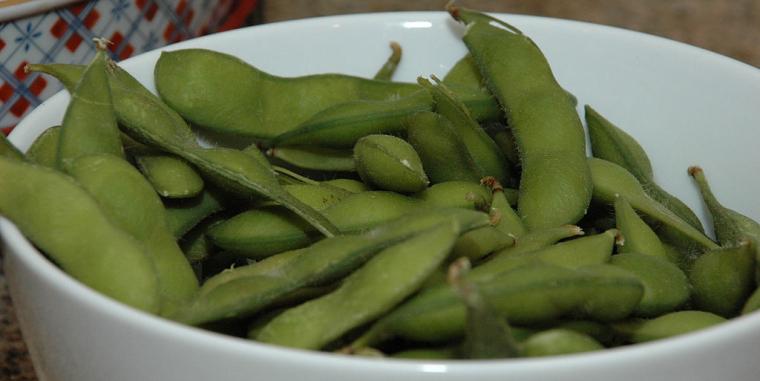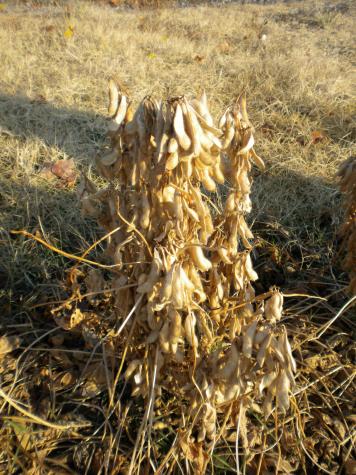KANSAS CITY, Mo. — Once available to U.S. consumers mainly in Japanese restaurants, edamame is showing up at farmers markets, salad bars and grocery store freezer aisles. If you enjoy the sweet, nutty flavor of these nutrient-rich green soybeans, edamame might even find a place in your garden, said a University of Missouri Extension horticulture specialist.
“Edamame is a simple crop to grow in the home garden,” said Marlin Bates. “Gardeners who have grown green beans will find that edamame is very similar, but often produces a higher yield.”
Unlike green beans, edamame plants ripen all pods simultaneously, making harvesting much easier. Edamame is harvested when green and the beans are often served while still in the pod. Soybean varieties used for edamame production are distinctly different from field soybeans, Bates said. Generally, the beans are larger, more tender and milder-tasting.
Because soybeans are short-day plants (they begin to flower when night periods reach a critical length), they are not good candidates for succession planting, he said. “This means all soybeans that a gardener intends to plant need to be planted together in early to mid-May.”
With plants spaced at 4-inch intervals within a row, gardeners should expect a pound of edamame for every foot of row space.
When harvesting green edamame, the window for optimum picking is only about four to six days. “Given this, gardeners who plant more than a few rows should be prepared to do more than simply eat fresh edamame,” Bates said.
Freezing whole pods is the most common method of preserving edamame. Blanch pods in boiling water for three to four minutes before freezing. Packaged in portion-sized containers, edamame can be pulled from the freezer and ready as a snack after a few minutes in boiling water. For those only interested in eating garden-fresh edamame, a dozen plants should provide more than enough pods for a family of four.
“The sheer production capacity of this crop is very impressive,” Bates said. “Add to that the nutritional value of the bean and you’ve got a simple and rewarding crop.”
A half-cup serving of edamame provides 11 grams of protein and is rich in calcium, vitamin A and phytoestrogens.
The beans can either be shelled and added to soups and salads, or boiled in salt water and served in their pods for a nutritious snack.
Some gardeners will let the beans ripen completely on the plant, similar to field soybeans. These dried beans can be used much like other dried beans or they can be roasted and eaten alone. Furthermore, since soybeans are self-pollinating, dried beans can be saved for planting next year’s garden.


